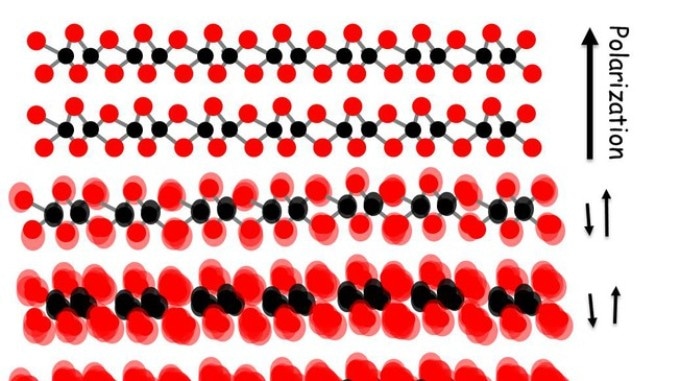Oct 16 2018
A new research reveals that the phase transitions of the exotic material molybdenum ditelluride (MoTe2) — a candidate for future electronics — are more complex than formerly thought.
 An illustration of the effect discovered in this study (credit: A. Weber/EPFL)
An illustration of the effect discovered in this study (credit: A. Weber/EPFL)
First-order phase transitions, where an amount of heat is gained or lost by a system, are a part of daily life. A characteristic example is the boiling of water into steam or freezing of water into ice.
A team of researchers guided by Hugo Dil at EPFL’s Institute of Physics have currently analyzed how electrons react to such a first-order phase transition in MoTe2, a metal with exotic properties that could be valuable for future electronic devices.
The researchers explored the transitions of MoTe2 where its crystal structure alters from one without electric polarization (a measure of the separation of positive and negative charges) to one with electric polarization after cooling the metal down to −23 °C.
This is a unique occurrence because electric polarization makes the conducting electrons to orient their spins based on their momentum. The researchers detected this using a method known as spin- and angle-resolved photoemission spectroscopy, which they performed at the Swiss Light Source.
Physicists usually think of first-order transitions as happening unexpectedly at the transition temperature (for example, 100 °C for boiling water). But the researchers noticed that the electrons near the surface of MoTe2 respond more slowly near the transition, and interact much more robustly than anticipated with vibrations in the crystal structure.
The scientists determined that, at room temperature, the first nanometers of crystal possess an ordered polar structure lying on top of a region of dynamically fluctuating electric polarization. The entire crystal becomes ordered only after cooling through the transition.
This discovery furthers our understanding of the everyday phenomenon of first-order transitions and how electric polarization in materials is switched on. The transition in MoTe2 is clearly more than a simple, on-off switch.
Andrew Weber, the first author of the research